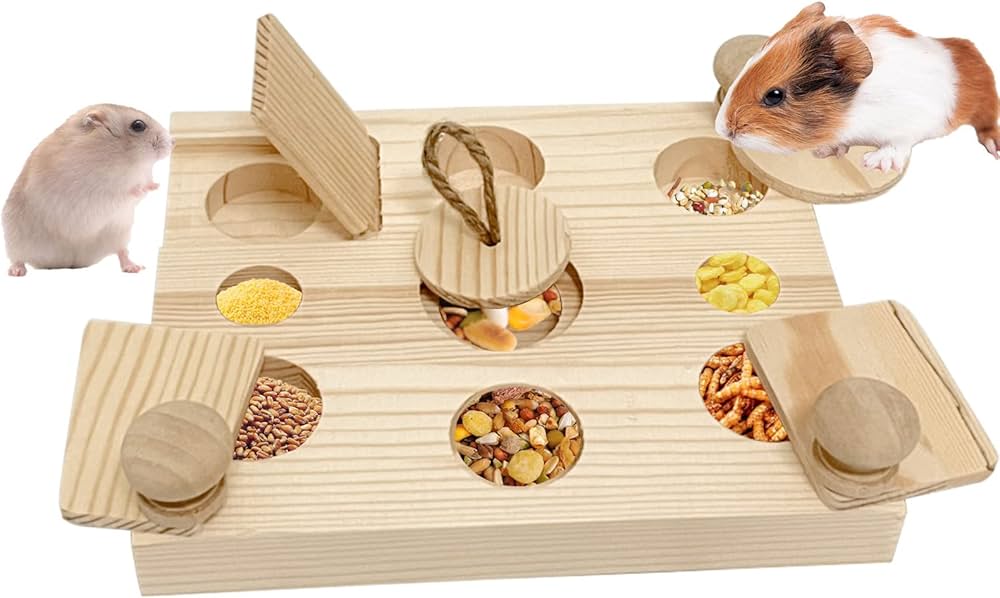Hamster Enrichment with Natural Materials
Understanding Natural Enrichment for Hamsters
Creating a stimulating environment for your hamster is crucial for its overall well-being, particularly when it comes to **natural enrichment**. Hamsters are naturally curious creatures that thrive in environments that mimic their wild habitats. Acknowledging their need for exploration and activity, incorporating natural materials into your hamster’s living space can significantly enhance their quality of life. By adding a variety of textures, scents, and challenges, you’ll keep your pet engaged and satisfied.

The Benefits of Natural Materials
Natural materials, such as wood, grasses, and plants, serve multiple purposes for your hamster. Firstly, they provide structural richness that stimulates exploration and foraging behaviors. Secondly, they can enhance your hamster’s dental health, as gnawing on wood and other natural materials helps wear down their continuously growing teeth. For example, safe wooden chew toys or tunnels made from untreated wood keep hamsters busy and mentally stimulated. Lastly, using natural materials can prevent boredom, which often leads to stress-related behaviors such as bar-chewing or excessive grooming.
Types of Natural Materials for Your Hamster
When selecting **natural materials** for enrichment, aim for products that are free from chemicals and other harmful substances. Here are some great options:
- Untreated Wood: Look for options like willow, hazel, or apple. These woods are not only safe but also provide different chewing experiences.
- Dried Grasses and Hay: Oat and timothy hay offer great textures for your hamster to burrow into and chew.
- Leaves and Branches: Natural sticks from pesticide-free trees can serve as climbing and hiding spots.
Creating an Enriching Habitat
To create a hamster habitat that promotes **enrichment**, arrange and organize your hamster’s items strategically. Providing a mix of hiding spots, chewable materials, and climbing features will result in an engaging environment. Observe your hamster’s behavior to identify what engages it most. In addition, changing the layout and introducing new materials regularly can help keep your furry friend excited and explore different areas of its habitat.
Building a Natural Tunnel System
A simple yet effective way to provide enrichment is to construct a tunnel system using natural materials. For instance, arrange durable branches in a way that mimics a cave structure, allowing your hamster to navigate through and feel protected. This experience feeds into their instinctual burrowing and provides a place to escape from the open space of their cage. Ensure that tunnels are appropriately sized for your hamster breed; they should be wide enough to fit comfortably, while also stable and secure.

Utilizing Natural Chews for Dental Health
Integrating **natural chews** into your hamster’s habitat is an excellent strategy to aid dental health and encourage play. With options like apple sticks or the bark of safe trees, you can give your hamster materials they will enjoy gnawing on. These natural chews help manage tooth growth and combat boredom. Use a mix of chew toys—some soft and some stiff—to provide your hamster with varied textures and experiences.
Safety Precautions When Using Natural Materials
While natural materials are often beneficial, it’s vital to ensure they are safe for your hamster’s use. Always look for organic or untreated products, as chemical treatments can cause health issues. Before introducing any new material, clean them thoroughly to remove dirt or potential parasites. Additionally, regularly monitor the wear on chew toys to ensure they do not splinter, which could harm your hamster.
Researching Safe Natural Options
Consult reliable resources for recommendations of safe natural materials for your hamster. Look for vet-approved brands or ask fellow hamster caretakers for insights. It’s crucial to gather accurate information to ensure that your pet’s enrichment plan is both enjoyable and hazard-free. Pay attention to your hamster’s reactions to different materials to gauge what works best in enhancing its environment.
Incorporating Natural Scents and Textures
Another engaging strategy is to incorporate natural scents and textures into your hamster’s habitat. Consider adding dried herbs like chamomile or lavender which not only can provide a calming environment but also piques the curiosity of your pet. Introducing different materials periodically can give them fresh scents and textures to explore, promoting a stimulating living space.
Key Takeaways
- Using natural materials promotes health and well-being in hamsters.
- Vary tunnel structures and chew items for a richer habitat.
- Regularly assess the safety and suitableness of all natural materials.
- Engage your hamster’s senses by introducing a variety of textures and scents.
FAQ
1. What types of wood are safe for hamsters?
Hamsters can safely chew and play with untreated woods from trees like apple, willow, and hazel. It’s essential to avoid softwoods like pine and cedar, which can be harmful due to their oils.
2. How often should I change my hamster’s environment?
It’s a good idea to rearrange or introduce new natural materials every few weeks. **Variety** keeps your hamster engaged and encourages exploration, which is essential for mental well-being.
3. Can I use store-bought herbal mixes for enrichment?
Store-bought herbal mixes are a great option if they are specifically formulated for small pets. Ensure that the ingredients are safe for hamsters and avoid blends containing additives or preservatives.
4. How can I tell if a natural material is safe?
Always opt for organic and untreated options. Additionally, research any materials you are unsure of, and consult vet recommendations for hamster-safe products.
5. What should I avoid using as natural chew toys?
Avoid using materials that may splinter, have toxic coatings, or come from questionable sources. Also, never use materials from treated furniture or wood that may be harmful to your hamster’s health.
